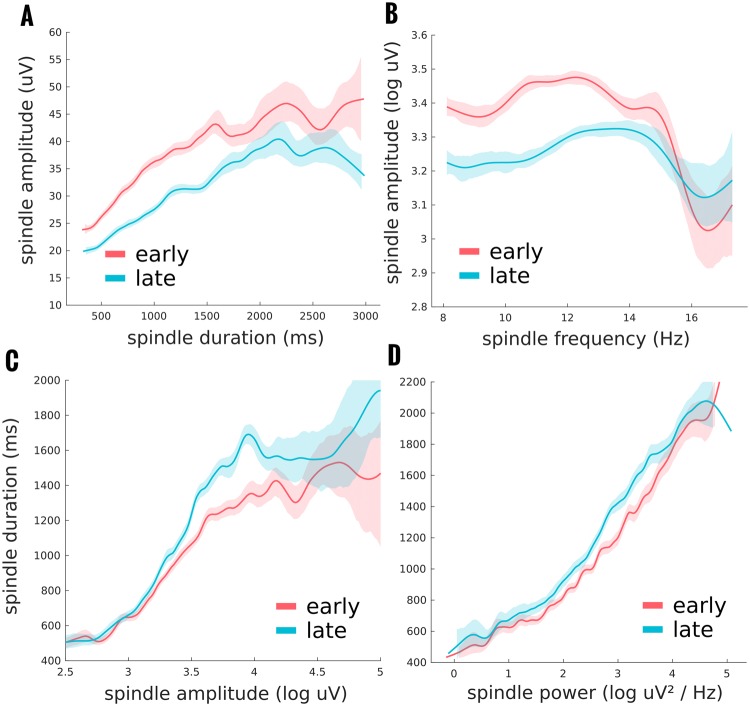Figure 3.
Individual spindle analysis using mixed models showed several interactions of interest. Spindle amplitude, and spindle duration data, see Fig. 2, can also be analysed using a mixed model approach including the other spindle parameters as covariates. In this way, we can examine, not only the condition differences between early and late night spindles, but how these parameters might interact with one another and be modulated by the time of night. (A) shows how the decrease in spindle amplitude from early to late night is primarily for spindles of shorter duration, and longer duration spindles are more variable in this condition effect. (B) Differences in spindle amplitude across the night is also modulated by spindle frequency with only significant differences found for spindles with a power peak in the lower frequency range. (C) Spindle duration increases across the night, and this increase depends on the spindle amplitude, with virtually no differences in small peak-to-peak amplitudes which steadily increases until an amplitude plateau when early to late distinctions are variable. (D) The effect of time of night on spindle duration is slightly modulated by the spectral power of the spindle, with steeper slopes late in the night. Of further note is that while spindle amplitude and duration positively correlate, spindle amplitude reduces across the night, while spindle duration increases.

